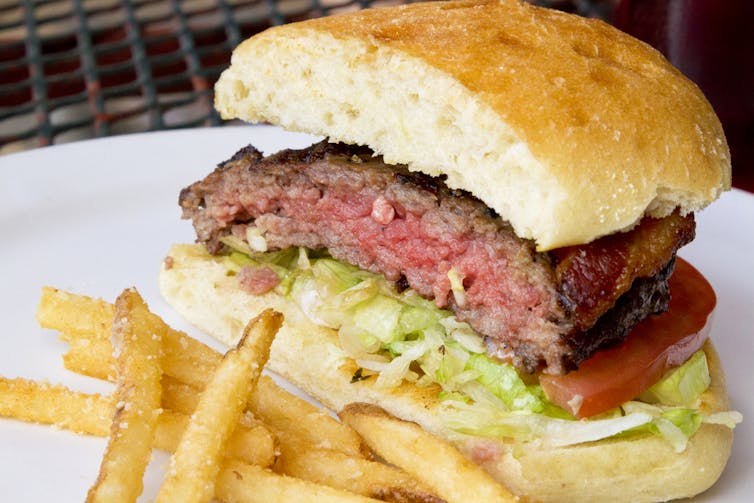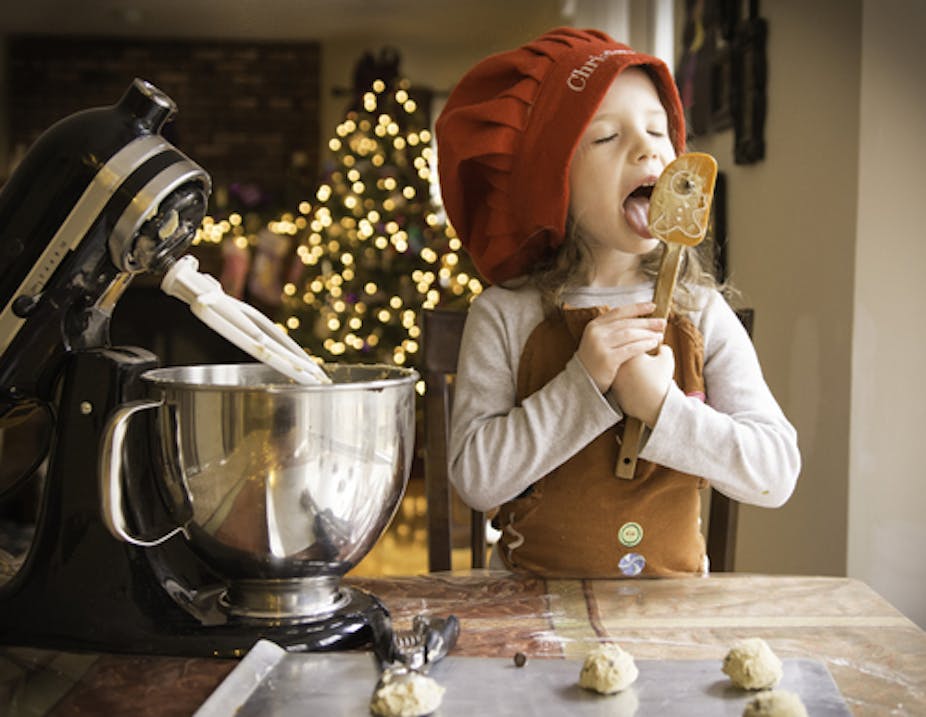For many people, the holiday ritual of baking cookies isn’t complete without also eating some of the raw dough. In my family, questions like “Who gets to lick the beaters?” and “Can I grab a piece of dough?” were always part of the cookie-making experience.
Yet, the U.S. Food and Drug Administration has repeatedly issued warnings about the dangers of consuming raw dough. Specific statements have included: “The bottom line for you and your kids is don’t eat raw dough,” “Don’t give your kids raw dough or baking mixes that contain flour to play with” and “Don’t make homemade cookie dough ice cream.”
In fact, the commissioner of the FDA tweeted a rhyme on the topic on Dec. 10, 2018: “You can not eat it in a house. You can not eat it with a mouse. We do not like it here or there. We do not like it anywhere.”
While Commissioner Scott Gottlieb’s “#FDA we are” rhyme was a fun reference to the “Sam I am!” of the Dr. Seuss’ original “Green Eggs and Ham,” the FDA’s message understandably raised confusion and concern among dough-loving consumers.
So, this leads to two questions:
1) Are there really risks of eating raw cookie dough?
2) Is it appropriate for public health officials to imply that no one should eat cookie dough (something that I, and apparently many others, enjoy) because of this risk?
An important safety message – or a half-baked idea?

To answer the first question: Yes, there are indeed at least two kinds of potential risks related to consuming raw cookie dough.
First, when most people think about health risks and cookie dough, they think about raw egg. Eggs can be contaminated with salmonella bacteria, and food safety recommendations encourage people to cook eggs until the white and yolk are firm in order to kill any bacteria.
However, anyone making cookies can do things to reduce this risk by using pasteurized egg products. When my kids and I make cookie dough, we never use regular eggs. Instead, we use shell eggs that have been pasteurized to kill any harmful bacteria without actually cooking the egg itself. (A great public health innovation, if you ask me!) As a result, we don’t have to worry about the eggs in the cookie dough.
The other, often underappreciated risk of raw cookie dough is the risk of the flour itself. While contamination of raw flour is rare, it can happen. Wheat grows in fields close to animals. When they “heed the call of nature,” as the FDA put it, wheat can become contaminated. In 2016, there was a nationwide recall of flour found to be contaminated with E. coli bacteria that led to dozens of people getting sick. Some were even hospitalized, and one went into kidney failure.
Such recall notices are extremely important. When we know that a product is contaminated, we can and should make absolutely sure to get rid of it. As soon as I read the recall notice, I checked whether my extra flour was recalled. It wasn’t. If it had been, or even if I hadn’t been sure, I would have thrown it out, no questions.
A right to choose?
But, this takes us to the second of my questions: If we take steps to minimize risk (such as using nonrecalled flour and pasteurized eggs), do consumers really have to stop eating cookie dough because of these risks?
I’m the last person to say that communications about public health risks are unimportant. Public health officials have a duty to warn people about the health risks associated with raw egg and even raw flour. When we have evidence that specific people are at risk, public health officials need to actively promote the actions that those people can take to minimize the identified risk. Doing so supports both public health objectives and individual decision-making.
By contrast, when a public health agency unequivocally states “Don’t eat raw dough” (regardless of whether flour or other ingredients were affected by a recall or not), it is implying (falsely) that no one could rationally disagree.
Well, I’m a public health faculty member, and I disagree.
I know that some public health officials will be horrified by my statement. They will believe that I am undermining their message and giving people permission to put themselves at risk unnecessarily.
But the key word of the previous sentence is “unnecessarily.” Whether something is necessary or not is not a scientific judgment. It is a value judgment. An FDA official may personally believe that eating raw cookie dough isn’t important and choose to never eat it. That is their choice. At the same time, I can believe that eating cookie dough (made from flour known to be not part of the recall and pasteurized eggs) is something that I enjoy enough that I’m willing to put myself and my children at (a very small) risk to do.
Of life and risk

As public health experts, we don’t want people to treat food recalls like math problems and estimate their likelihood of getting sick. If you have affected food, you need to act. Period.
But if I know that my flour is not recalled, then there is no specific reason to believe that the flour is not OK to eat raw. The only risk is the very small, baseline risk – for example, that the flour has been contaminated by a different and as-of-yet unknown source.
We can’t pretend that we live our lives without risk. I put myself and my children at risk every time we get into our car. Every time we eat sushi or rare hamburgers. Every time one of us takes medications. Every time we ride a bike or play soccer.
Yet, many of us choose to do those things anyway, while minimizing risk when we can (for example, by wearing seat belts and bike helmets). We choose life and risk over safety and a life a little less enjoyable. It is not irrational to treat cookie dough the same way.
So, to my fellow public health practitioners: Let’s keep working on informing the public about health risks that they may not anticipate or appreciate. Motivating people to take immediate action about specific food recalls. Encouraging people to minimize risks.
At the same time, let’s all please remind ourselves that our goal is not to minimize all risk, no matter the cost. Our goal is to maximize life. Sometimes maximizing life means warning people that their flour is contaminated and making sure they throw it out. Sometimes maximizing life means letting them enjoy some (carefully prepared) cookie dough without shame.
There is risk in eating raw cookie dough. Nonetheless, as I noted in my Twitter reply to Dr. Gottleib’s rhyme: “… if raw dough makes you rejoice, accepting risk might be a choice. … But it’s your choice re what to do. Neither FDA nor I are you.”
This is an updated version of an article that was published originally on July 14, 2016.

